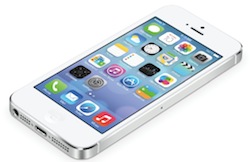
Seamless offloading of cellular data traffic onto WiFi networks is a big step closer. Apple announced that version 7 of iOS and the next generation of iPhones will support the Hotspot 2.0 standard. The new capability should start appearing this fall.
The idea is to allow users to automatically authenticate on a WiFi hotspot blessed by their carrier when it’s available. Data traffic would then be routed via WiFi until the user moves out of range. At that point, it would switch back to the cellular network.
AT&T is already moving ahead with establishing compatible WiFi capacity, as it struggles to move traffic off of its mobile network. It needs support from handset manufacturers, and Apple’s decision to do so makes it a lot more likely that others will follow suit. Apple has a history of playing the market leader role when it comes to popularising standards – it was originally the first to get into WiFi in a big way. The calculation for other manufacturers will change, as they weigh the risk of letting Apple have a lock on what could be a very popular feature against the cost of integrating the new technology.
Having a widely accepted standard for integrating WiFi authentication and payment with mobile traffic management makes it easier for carriers to use third party capacity, and it gives hotspot operators a financial incentive to expand coverage. With a third of smart phone traffic already going via WiFi and overall bandwidth consumption continuing to boom, that kind of flexibility is a necessity.
